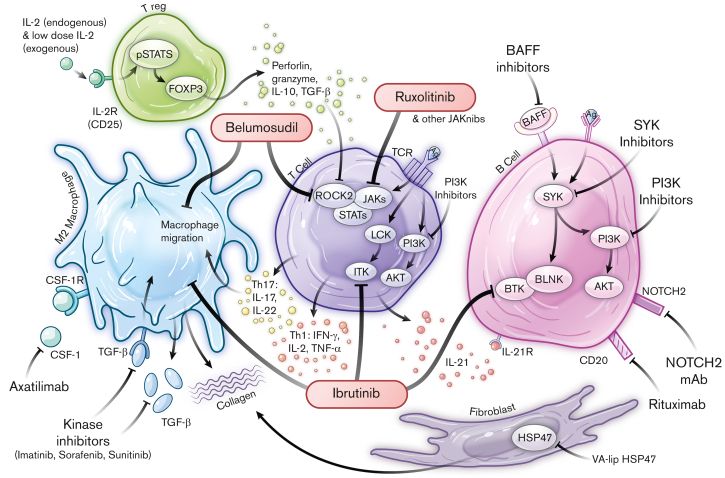Dr. Buxbaum is a member of the Chronic GvHD National Institutes of Health (NIH) Consensus Project Biology Task Force
One goal of Dr. Buxbaum’s bench-to-bedside research program is to elucidate mechanisms underlying immune barriers to hematopoietic stem cell transplantation (HCT). Often, HCT is the only chance for cure in patients with acquired and inherited blood diseases, including leukemias.
Unfortunately, over half of HCT recipients develop a complication called graft-versus-host disease (GvHD). This can be a debilitating and even fatal complication.
GvHD occurs when the donor immune cells react against the recipient’s organs, including liver, intestines, and skin — the graft attacks the host. GvHD is primarily driven by donor T cells. Activated T cells rely on glycolysis, a metabolic pathway that uses sugar (glucose).
Currently, GvHD is diagnosed with biopsy, which besides being painful may pose an infection and bleeding risk to the person who has just received an HCT. Dr. Buxbaum’s laboratory is leveraging pre-clinical models of GvHD to develop new metabolism-based diagnostic tools and therapies for GvHD.
Deuterium (2H) is a heavy, stable/non-radioactive form of hydrogen, which can be differentially detected by magnetic resonance imaging (MRI) compared to proton (1H) or standard MRI. Deuterium can be attached to water or sugar (glucose).
When administered systemically, such as via drinking, (deuterated) glucose is preferentially taken up by tissues with high rates of glycolysis. T cells that infiltrate target organs of GvHD take up deuterated glucose because they are highly glycolytic.
Dr. Buxbaum’s team has used deuterium MRI after feeding deuterated glucose to animals with GvHD to non-invasively detect GvHD in their internal organs. The same immune cell metabolism patterns that are present in animals with GvHD are also present in patients with this disease.
Dr. Buxbaum is leading a clinical trial that will test this approach for non-invasive diagnosis of GvHD in HCT patients. Additionally, the Buxbaum laboratory is using metabolic inhibitors in GvHD pre-clinical models to develop the next generation of therapies for GvHD. These studies are currently in the pre-clinical phase.
Read the research
- Assmann JC, et al. Glycolytic metabolism of pathogenic T cells enables early detection of GVHD by 13C-MRI. Blood. 2021 Jan 7;137(1):126-137. doi: 10.1182/blood.2020005770. PMID: 32785680; PMCID: PMC7808015.
- Buxbaum NP, et al. Chronic GvHD NIH Consensus Project Biology Task Force: evolving path to personalized treatment of chronic GvHD. Blood Adv. 2023 Sep 12;7(17):4886-4902. doi: 10.1182/bloodadvances.2022007611.
- Mhandire K, Saggu K, Buxbaum NP. Immunometabolic Therapeutic Targets of Graft-versus-Host Disease (GvHD). Metabolites. 2021 Oct 27;11(11):736. doi: 10.3390/metabo11110736.
- Buxbaum NP, et al. In vivo kinetics and nonradioactive imaging of rapidly proliferating cells in graft-versus-host disease. JCI Insight. 2017 Jun 15;2(12):e92851. doi: 10.1172/jci.insight.92851.
Connect with the Buxbaum Lab
Phone: 716-845-8151
Office Location: Cancer Cell Center 521E
Department of Pediatric Oncology
Roswell Park Comprehensive Cancer Center
Elm and Carlton Streets
Buffalo, NY 14263
